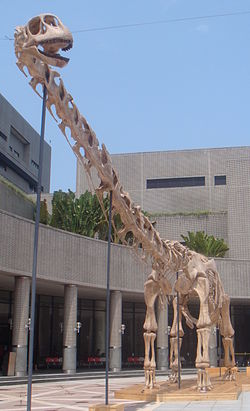| Hekou Group | |
|---|---|
| Stratigraphic range: Early Cretaceous, [1] | |
| Type | Geologic group |
| Sub-units | Huazhuang Formation, Hongkoucheng Formation, Yanguoxia Formation, Zhujiatai Formation |
| Underlies | Unconformity: Minhe Formation |
| Overlies | Unconformity: Xiangtang Formation |
| Thickness | 3,700 m (12,100 ft) |
| Lithology | |
| Primary | Sandstone, mudstone, conglomerate |
| Location | |
| Coordinates | 35°54′N103°18′E / 35.9°N 103.3°E |
| Approximate paleocoordinates | 34°48′N103°06′E / 34.8°N 103.1°E |
| Region | Gansu |
| Country | China |
| Extent | Longzhong Basin |
The Hekou Group is a geological group in Gansu Province, China. It is Early Cretaceous in age. Many dinosaur fossils have been recovered from the Hekou Group, including iguanodonts, large sauropods, and armored dinosaurs. Fossil eggs are rare, but one oogenus, Polyclonoolithus , was discovered in the Hekou Group. [2] Extensive fossil tracks belonging to pterosaurs and dinosaurs have also been described. [3] [4] The group spans the Valanginian to Albian and can be subdivided into four formations. [1]





